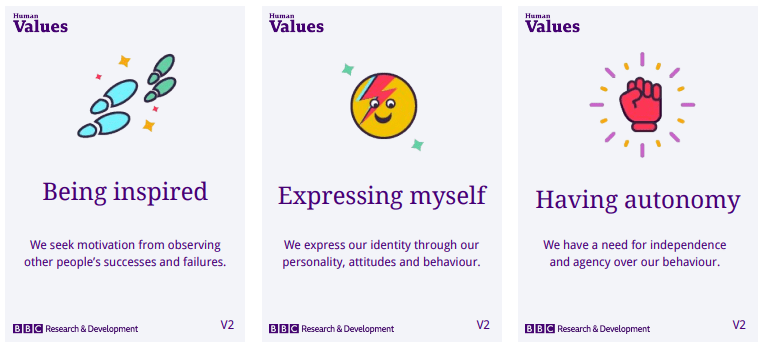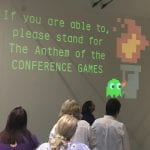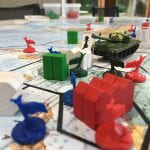Do MOOCs contribute to student equity and social inclusion? A systematic review by Sarah R Lambert (read by Suzi Wells)
This study is a large literature review looking at both empirical research and practitioner guidance around using MOOCs and other open (as in free) learning to promote student equity and social inclusion. The study starts from 2014 because that’s the second wave of MOOCs, where more stable and sustainable practice begins to emerge.
The aims of the MOOCs were broken into two broad areas: those focused on student equity (making education fairer for tertiary learners and those preparing to enrol in HE) – this was the most common aim; and those who sought to improve social inclusion (education of non-award holders & lifelong learners). The literature was predominantly from US, UK, Australia, but they were only studying literature – possibly unsurprisingly for articles written in English. There was a near 50/50 split between empirical research and policy/practice recommendations, and the studies focused slightly more on MOOCs than on other other open learning. One notable finding was that the success rate (among published studies at least) was high – more often than not they met or exceeded their aims.
Lambert includes lots of useful detail about factors that may have led to successful projects. MOOC developers should learn about their learners and make content relevant and relatable to them. Successful projects often had community partners involved in the design, delivery & support – in particular, initiatives with large cohorts (~100) that were very successful all had this. Designing for the learners meant things like: designing for mobile-only and offline access, teaching people in their own language (or at least providing mother-tongue facilitation) and, where relevant, mixing practitioners with academics in the content.
Facilitating and support the learning was also key to success. Local study groups or face-to-face workshops were used by some projects to provide localisation and contextualisation. Facilitators would ideally be drawn from existing community networks.
A related point was to design content from scratch – recycling existing HE materials was not as successful. This should be done in an interdisciplinary team and/or community partnership. Being driven entirely by an IT or digital education team was an indicator that a project would not meet its aims. Projects need technical expertise but education and/or widening participation too. Open as is free-to-use is fine, licence didn’t seem to have an impact.
In short:
- Work with the people you intend to benefit.
- Create, don’t recycle.
- Don’t expect the materials to stand by themselves.
If you’re interested in social justice through open learning, think OU not OERs.
What does the ‘Postdigital’ mean for education? Three critical perspectives on the digital, with implications for educational research and practice by Jeremy Knox (read by Suzanne Collins)
This article explores the idea of what ‘post-digital’ education means, specifically thinking about human-technology relationships. It begins with an analysis of the term post-digital’, embracing the perspective of ‘post’ as a critical appraisal of the understanding of digital rather than simply meaning a different stage, after, the digital. This initial analysis is worth a read, but not my main focus for this reading group so here I’ll jump straight to the main discussion, which is based on three critical perspectives on digital in education.
The first is “Digital as Capital”. Here, Knox talks about the commercialisation and capitalisation of digital platforms, such as social media. This platform model is increasingly based on the commodification of data, and so inevitably students/teachers/learners become seen as something which can be analysed (eg learning analytics), or something under surveillance. If surveillance is equated to recognition, this leads to further (perhaps troubling?) implications. Do you need to be seen to be counted as a learner? Is learning always visible? Does this move away from the idea of the web and digital being ‘social constructivist’?
Secondly, Knox looks at “Digital as Policy”. This (for me) slightly more familiar ground discusses the idea that ‘digital’ education is no longer as separate or distinct from ‘education’ as it once was. In a ‘post-digital’ understanding, it is in fact mainstream rather than alternative or progressive. The digital in education, however, often manifests as metrification in governance – eg schools are searchable in rankings based on algorithms. In this sense, ‘digital education’ moves away from ‘classroom gadgets’ (as Knox puts it) and sees it as something intrinsic and embedded in policy, with strategic influence.
Lastly, he discusses “Digital as Material”, which focuses on surfacing the hidden material dimensions of a sector which was often seen as ‘virtual’ and therefore ‘intangible’. The tangible, material aspects of digital education include devices, servers, and other physical elements which require manual labour and material resources. On one hand there is efficiency, but on the other there is always labour. As education, particularly digital education, often comes from a sense of social egalitarianism and social justice, this is a troubling realisation, and one which lead to a rethink in the way digital education is positioned in a post-digital perspective.
In conclusion, Knox suggests that ‘post-digital’ should be understood as a ‘holding to account of the many assumptions associated with digital technology’, which I feel sums up his argument and is probably something we should try and do more of regardless of whether we’re a ‘digital’ or ‘post-digital’ education office.
What’s the problem with learning analytics? by Neil Selwyn (read by Michael Marcinkowski)
For this last session I read Neil Selwyn’s ‘What’s the Problem with Learning Analytics’ from the Journal of Learning Analytics. Appearing in a journal published by the Society for Learning Analytics Research, Selwyn’s socio-technical approach toward the analysis of learning analytics was a welcome, if somewhat predictable, take on a field that too often seems to find itself somewhat myopically digging for solution to its own narrow set of questions.
Setting learning analytics within a larger social, cultural, and economic field of analysis, Selwyn lays out an orderly account of a number of critical concerns, organized around the implications and values present in learning analytics.
Selwyn lists these consequences of learning analytics as areas to be questioned:
- A reduced understanding of education: instead of a holistic view of education it is reduced to a simple numerical metric.
- Ignoring the broader social contexts of education: there is a danger that by limiting the understanding of education that we ignore important contextual factors affecting education.
- Reducing students’ and teachers’ capacity for informed decision-making: the results of learning analytics comes to overtake other types of decision making.
- A means of surveillance rather than support: in their use, learning analytics can have more punitive rather than pedagogical implications.
- A source of performativity: students and teachers each begin to focus on achieving results that can be measured by analytics rather than other measures of learning.
- Disadvantaging a large number of people: like any data driven system, decisions about winners and losers can be unintentionally baked into the system.
- Servicing institutional rather than individual interests: the analytics has more direct benefit for educational institutions and analytic providers than it does for students.
He goes on to list several questionable values embedded in learning analytics:
- A blind faith in data: There is a risk that there is a contemporary over-valuation of the importance of data.
- Concerns over the data economy: What are the implications when student data is monetized by companies?
- The limits of free choice and individual agency: Does a reliance on analytic data remove the ability of students and educators to have a say in their education?
- An implicit techno-idealism: Part of leaning analytics is a belief in the benefits of the impacts of technology.
Toward this, Selwyn proposes a few broad areas for change designed to improve learning analytics’ standing within a wider field of concern:
- Rethink the design of learning analytics: allow for more transparency and customization for students.
- Rethink the economics of learning analytics: give students ownership of their data.
- Rethink the governance of learning analytics: establish regulatory oversite for student data.
- A better public understanding of learning analytics: educate the wider public of the ethical implications of the application of learning analytics to student data.
Overall, Selwyn’s main point remains the most valuable: the idea of learning analytics should be examined within the full constellation of social and cultural structures within which it is embedded. Like any form of data analytics, learning analytics does not exist as a perfect guide to any action, and the insights that are generated by it need to be understood as only partial and implicated by the mechanisms designed to generate the data. In the end, Selwyn’s account is a helpful one — it is useful to have such critical voices welcomed into SOLAR — but the level at which he casts his recommendations remains too broad for anything other than a starting point. Setting clear policy goals and fostering a broad understanding of learning analytics are hopeful external changes that can be made to the context within which learning analytics is used, but in the end, what is necessary is for those working in the field of learning analytics who are constructing systems of data generation and analysis to alter the approaches that they take, both in the ‘ownership’ and interpretation of student data. This enforces the need for how we understand what ‘data’ is and how we think about using it to change. Following Selwyn, the most important change might be to re-evaluate the ontological constitution of data and our connection to it, coming to understand it not as something distinct from students’ education, but an integral part of it.
Valuing technology-enhanced academic conferences for continuing professional development. A systematic literature. Professional Development in Education by Maria Spilker (read by Naomi Beckett )
This literature review gives an analysis of the different approaches taken to enhance academic conferences technologically for continued professional development. Although there have been advances and new practices emerging, a definite coherent approach was lacking. Conferences were being evaluated in specific ways that were not considering all sides.
‘Continued professional development for academics is critical in times of increased speed and innovation, and this intensifies the responsibilities of academics.’
This makes it more important to ensure when academics come together at a conference, there is a systematic approach to look at what they should be getting out of the time spent there. The paper suggests this is something that needs to be looked out when first starting to plan a conference, what are the values?
The paper talks about developing different learning experiences at a conference to engage staff and build their professional development. There is often little time for reflection and the paper suggests looking at more ways to include this. Using technology is an example of a way this could be done. Engagement on Twitter for example gives users another channel to discuss and network, and this takes them away from the normal traditional conference formats. Making more conferences online also gives users the opportunities to reach out to further networks.
The paper mentions their Value Creation Network, looking at what values we should be taking out of conferences. These include, immediate value, potential value, applied value, realised value, and re-framing value. Looking at these to begin with is a good start to thinking about how we can frame academic conferences, so delegates get the most use out of the time spent there, and work on their own professional development too.
We asked teenagers what adults are missing about technology. This was the best response by Taylor Fang (read by Paddy Uglow)
Some thoughts I took away:
- Traditionally a “screen” was a thing to hide or protect, and to aid privacy. Now it’s very much the opposite.
- Has society changed so much that social media is the only place that young people can express themselves and build a picture of who they are and what their place is in the world?
- Adults have a duty to help young people find other ways to show who they are to the world (and the subsequent reflection back to themself)
- Digital = data = monetisation: everything young people do online goes into a money-making system which doesn’t have their benefit as its primary goal.
- Young people are growing up in a world where their importance and value is quantified by stats, likes, shares etc, and all these numbers demonstrate to them that they’re less important than other people, and encourages desperate measures to improve their metrics.
- Does a meal/holiday/party/etc really exist unless it’s been published and Liked?
- Does the same apply to Learning Analytics? Are some of the most useful learning experiences those which don’t have a definition or a grade?
Suggested reading
- Articles from the Good Reads from 2019: Our NIDL Top 10 Open Access Journal Articles … plus a couple of shorter pieces …
- We asked teenagers what adults are missing about technology. This was the best response. – MIT Technology Review – Dec 2019 (not from NIDL)
- The 100 Worst Ed-Tech Debacles of the Decade – Audrey Watters on 31 Dec 2019






